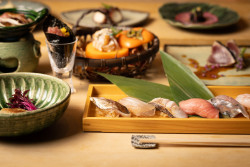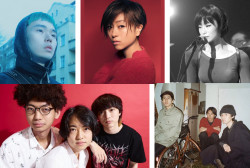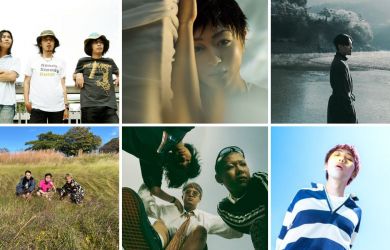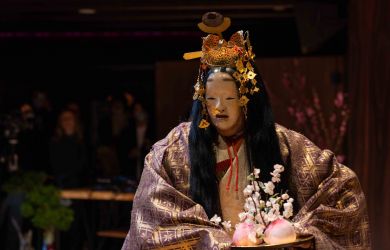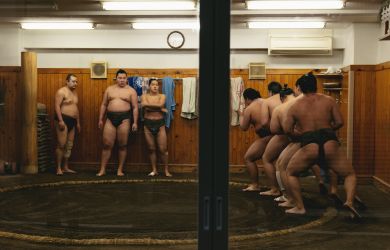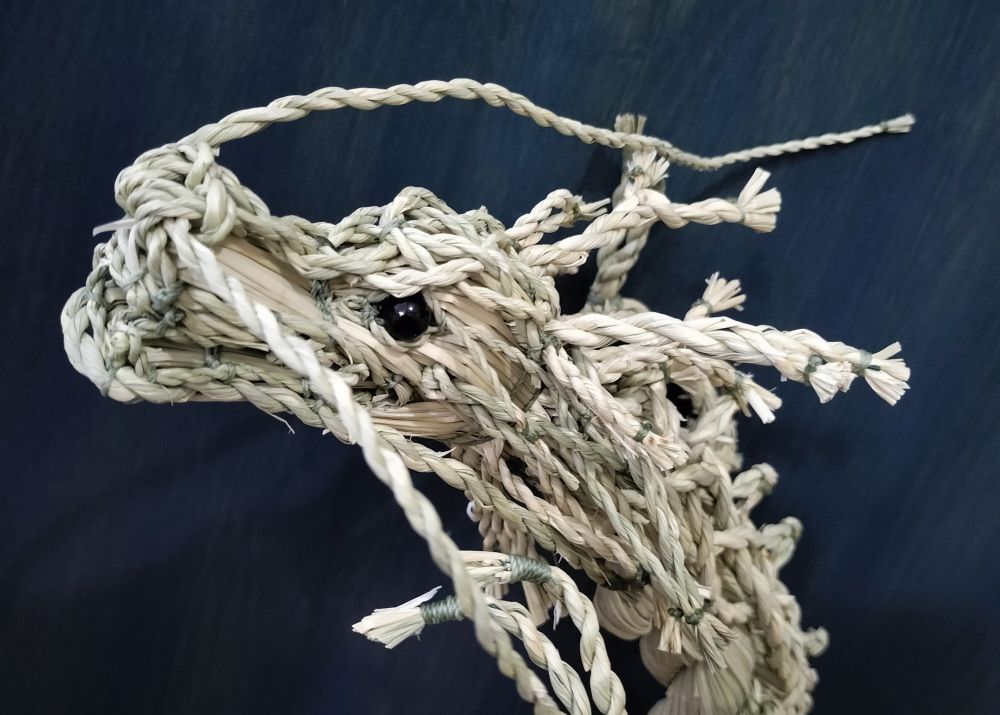
Born from hundreds of tiny knots and interlaced materials, the New Year’s spirit—a shimenawa dragon—awakens in a small studio in Okayama. Shimenawa, sacred woven ropes, are lovingly handcrafted by Yumiko Yamakawa using locally sourced materials such as rice straw, denim and tatami edges.
“In the prototype stage, I combined shimenawa with macramé techniques to create a unique form of expression—shimenawa art,” the craft designer says. Through the eyes of Yamakawa, Metropolis learns how to celebrate the New Year in Japan with shimekazari, a Japanese New Year’s decoration reminiscent of wreaths from the West. While the shimenawa found at shrines and sacred landmarks are grand in size, shimekazari are small enough to be beautifully displayed on your front door or inside your home. These decorations are protective charms, safeguarding against bad spirits and filling the new year with good fortune.
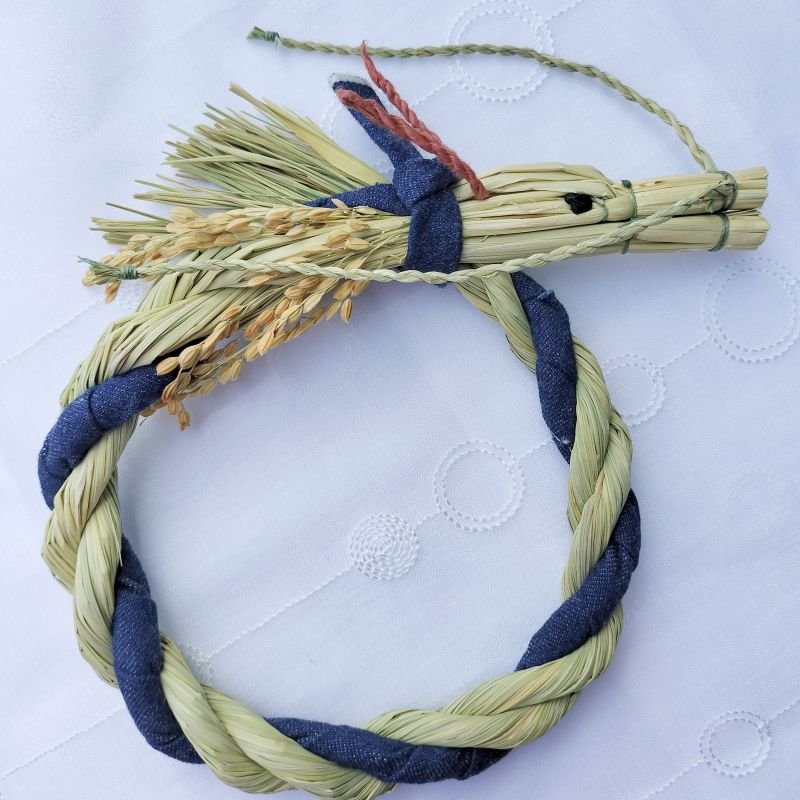
The Journey into Shimenawa Art
Yamakawa’s story is one of serendipity and deep-rooted love for her culture. “In 2012, I opened up a clinic and studio. In 2014, I was fascinated by the handcraft of macramé and in 2016, as if guided by my love of Japanese culture (calligraphy, dressmaking, judo), I was led into the world of shimenawa after being asked to create one.” What sets Yamakawa’s work apart is her special designs and choice of materials. In anticipation of overseas exhibitions, she began to explore alternatives to the dried rice leaves and stalks used in traditional shimenawa, as they could not be taken out of the country.
“When I was working exclusively with rice straw, I was not conscious of ‘color.’ However, I feel that the use of denim and tatami mat edges has enriched my work. By selecting and combining colors, I can bring out the beauty and texture of each material.” She has also begun to experiment with igusa, tatami’s raw material known for its potential deodorant and antibacterial properties. Infused with the calming fragrance of igusa, Yamakawa’s pieces are a multi-sensory experience.
Sculptures Inspired by Nature
Many of Yamakawa’s artworks are inspired by the natural world. Her designs encompass ornate stars, flowers and a variety of creatures such as rabbits, tigers, frogs, phoenixes and dragons. Among her creations is the ise-ebi, or Japanese spiny lobster, using navy blue tatami edges. The ise-ebi is a symbol of celebration and longevity, expressed by its lively jumps and beard-like antennae. Yamakawa often displays these sculptures in dynamic positions within fabric-lined frames. The movement and color of their woven strands create the effect of a three-dimensional painting. “Kotohogi” is one such addition to her framed collection. This artwork features a red and white phoenix with gold and silver details, skillfully crafted from tatami mat edges. Gracefully facing towards one another, these birds symbolize prosperity and rebirth. A macramé gold star with a pendant at its core is positioned between them, set against a blue denim backdrop.
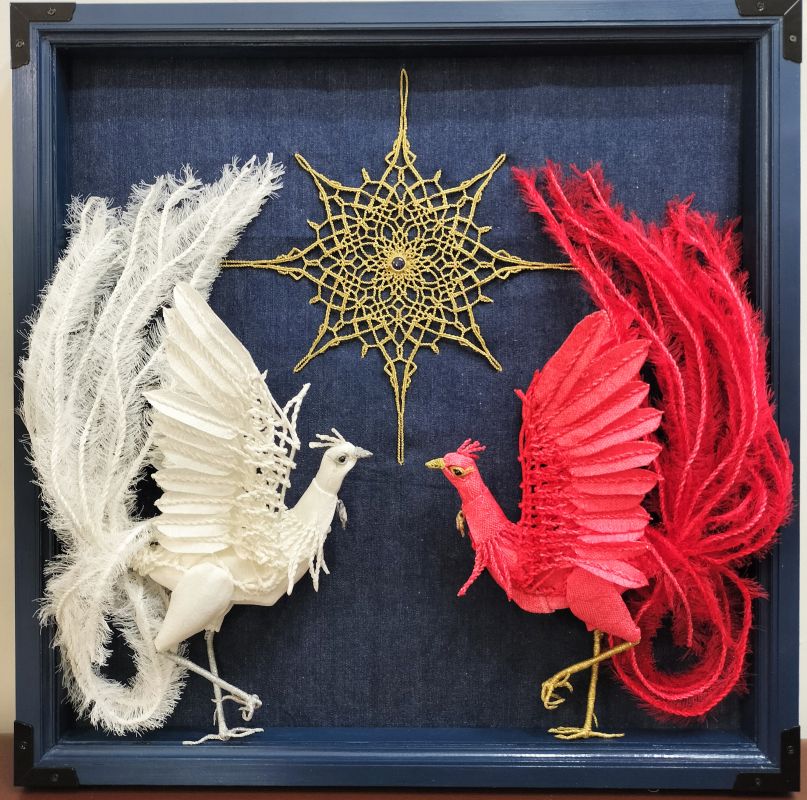
Designs for the Year of the Dragon
Yamakawa has been experimenting with the creation of dragons in her shimenawa art since 2017. Each dragon has its own character, yet surprisingly, none appear menacing. “Ryujin,” or dragon god, is a handsome earthy-toned shimenawa made of rice straw. Her largest dragon is a powerful seven-meter-long shimenawa—a perfect embodiment of the dragon’s strength and wisdom. Equally impressive is her one-meter-long dragon made of tatami mat edging with an elaborate expression down to the tips of its claws. As it is difficult to decorate ordinary homes with such large sculptures, she began to craft simple yet elegant dragon-themed shimekazari and accessories. “In anticipation of the Year of the Dragon, I designed a dragon’s body with a rope made of rice straw and denim, and a face with red washi paper horns, based on the concept of ‘a dragon that can be enjoyed year-round in the living room.’”
Since 2020, Yamakawa has been dedicating her shimenawa artworks to a shrine with which she shares a deep connection. “I was surprised to hear the voices of visitors and shed tears of joy.” One of Yamakawa’s largest dragons is on permanent display at the Fujita Shrine in Okayama, where she continues to bring joy to the people of her community.
Celebrating the New Year with Shimekazari
Yamakawa welcomes all to celebrate the New Year with shimekazari. “To make a traditional Japanese New Year’s decoration, first make a shimenawa rope and then embellish it.” Although it varies from region to region, many people use plants that are said to bring good luck, such as yuzuriha, daidai, matsu and nanten. For those who wish to take their shimekazari overseas, she recommends substituting rice straw with string or paper and attaching artificial flowers or plants.
While developing her style, Yamakawa was mindful of shimenawa’s sacred nature. Naturally, her love of macramé led her to combine knotting with shimenawa twisting techniques. The result was an intricate design that wove organic shapes and textures. At Yamakawa’s Yui Space studio in Okayama, visitors can book a session to learn a shimenawa or macramé technique. In the near future, she hopes to open a store where customers can freely visit.
“I am working on the theme of ‘connecting happiness and coloring lives.’ I hope that those who see and experience my designs will share the same feelings. Creation for me is to ‘create a form of happiness,’ and it’s a great pleasure for me to be able to make it my job.”
Yui Space
2-12-17 Tomita-cho, Kita-ku, Okayama-shi
yuispace.jp
@yui_space

